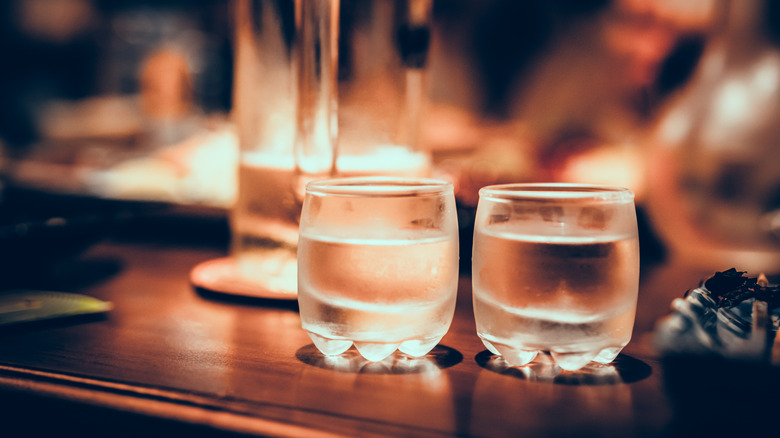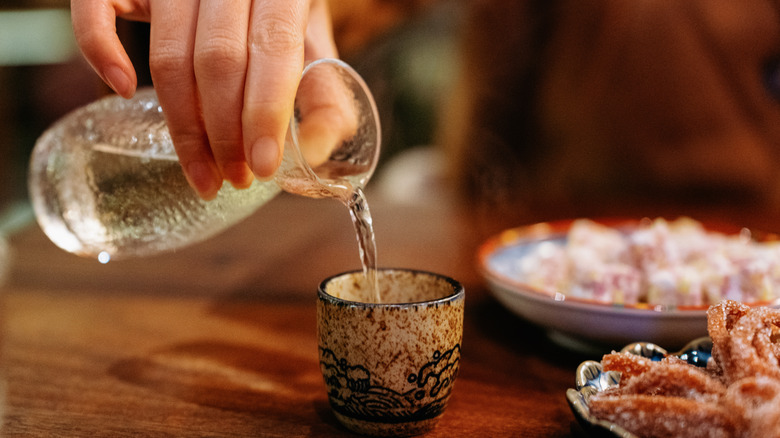Ancient Sake Was Made In An Unsanitary Way
Kuchikamizake (which translates roughly to "mouth-chewed sake") represents one of Japan's earliest-known alcoholic drinks made from rice. Its beginnings connect to the time period when rice farming was spreading across Japan during the Yayoi period which spans from roughly 300 B.C. to A.D. 300. The production of kuchikamizake was quite primitive by today's standards. It required people, usually women, to first chew cooked rice, millet, or chestnuts. The chewing wasn't random; it served a key process. The enzymes found in saliva (particularly amylase) start the conversion of starches in the grain into the basic sugar needed for fermentation.
Once chewed, this starchy mash was spat into a shared tub or container. This vat was then set aside, letting airborne yeast and bacteria work on the sugars. Over several days, these microorganisms would turn the sugar into alcohol through fermentation. This method of production transferred microorganisms from the chewer's mouth directly into the liquid, introducing health risks via microbial bacteria. Needless to say, this type of sake production wouldn't stand a chance against today's health standards. The drink itself was noted as being thick, murky, and whitish. Its sour taste was balanced by a slight sweetness from whatever sugar hadn't fully converted to alcohol. The alcohol strength was typically not very high, estimated to be somewhere between 3% and 7%.
How kuchikamizake developed and what it's like today
The practice of making kuchikamizake mostly went away centuries ago as people turned to more sanitary production methods. A significant shift happened with the introduction and adoption of koji mold (Aspergillus oryzae). This shift began gaining traction around the Nara period (A.D. 710 to 794). Koji mold supplies enzymes capable of breaking down starches into sugars without the need for saliva. This new technique, combined with isolating specific yeast strains for fermentation, paved the way for the clear, refined sake ordered with Japanese cuisine (just not sushi).
Nowadays, legitimate kuchikamizake isn't something you can buy or find brewed, unlike the many common Japanese beers. There's an Okinawan beverage called Miki that shares some historical ties, but the Miki available today is usually a sweet, non-alcoholic (or very low-alcohol) drink made without any chewing involved. The joy found in some sakes today sometimes possess a sour quality reminiscent of the old drink, but these are quite distinct from the original kuchikamizake. Any products seen today that might be inspired by kuchikamizake (like in movies or tv shows) use standard brewing practices which definitely don't involve saliva.

